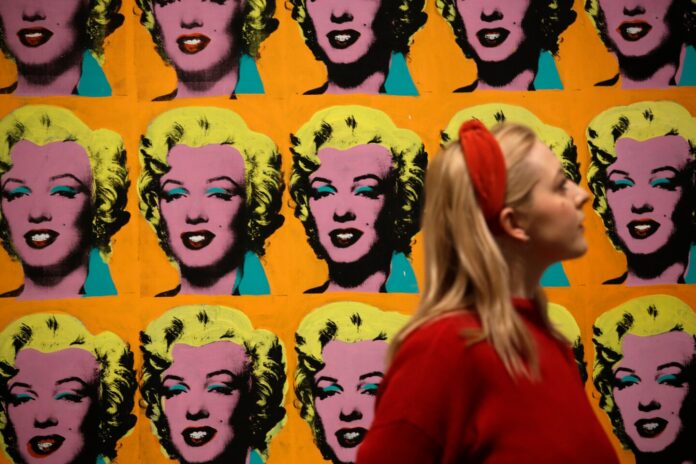Warhol, the silent recorder, is at the center of all these discussions, but he had very little hand in putting the text itself together. Instead, the 24 tapes were transcribed by four female typists, including two teenage girls, with each adding their own flair. Their typos and misspellings are preserved in the final edition, and it’s clear that each typist has her own style. Some transcribers identify each speaker, others do not. Some type up the background noises, while others focus on the conversation. The final product inevitably encourages us to ask who “a: A Novel” even belongs to. Is it the property of the people whose recorded conversations form the content of the book? The four typists who transcribed the tapes? Or Warhol himself, the artistic visionary?
Of course, Warhol’s name is on the book, so it goes down in history as his own. But Nicole Flattery’s debut novel, “Nothing Special,” gives voice to the silent and uncredited writers of “a: A Novel,” imagining the world of one of these young typists. Set primarily in the late ’60s, “Nothing Special” follows Mae, a 17-year-old girl in New York City who drops out of school to work in Warhol’s Factory. Fictional and not based on any real person in the artist’s orbit, Mae is running away from the dullness of her life — an alcoholic mother, a bad sexual encounter with an older man, drama with her best friend at school — and she finds a place with Warhol’s workers, along with other runaways and rebels. Mae quickly befriends Shelley, another teenage typist, and soon both are assigned a special project: transcribing the tapes that would become “a: A Novel.”
At first, Mae blends into her work easily, enjoying the sound of the typewriter keys, reveling in how different she is from the girls she has left behind at school. As she listens and types, Mae is immersed in the world of the tapes, the queer, rebellious, edgy voices she hears. They begin to feel more real than her actual life, and Mae and Shelley both take a deep sense of pride in their work. As plain young working girls, they are at the fringes of The Factory’s frisson-inducing climate, so it’s a thrill to get to eavesdrop on these famous people. As they work with the tapes, Mae and Shelley begin to consider themselves more than just typists. They are writers. Mae puts “more and more of myself in the book — misspellings, pauses where there weren’t any, my own emphasis, my own in-jokes. I had to leave a mark.” But we know how the drama of the writing of this book ends — we know that the typists of “a: A Novel” remain uncredited and unknown (save for Maureen Tucker, drummer for the Velvet Underground). If Mae and Shelley leave a mark, it is only inside the anonymous typos and discrepancies within Warhol’s novel — they get no credit.
“Nothing Special” gets a bit heavy-handed here, when recalling Mae’s anger at realizing she won’t be presented as the writer of these pages, but even this didactic turn partakes of the drama of a girl’s diary. It’s fitting, since Flattery is true to her teenage protagonist and her inner world. Mae’s central drama is the incessant questioning of any girl: How should I be? How should I look? What is everyone else doing? Like any girl, she looks to others to find her way. She models herself after Shelley and the other typists, relentlessly copying their clothes, makeup and actions.
Ultimately, it is here that Flattery is at her most interesting, demonstrating that the creative genius of Warhol overlaps with the regular dramas of girlhood. Just as Warhol’s art is haunted by questions of ownership and imitation, so is Mae’s identity never her own. She’s constantly modeling herself after other influences, defining herself in opposition to her old life — and her mother. This is the strength of “Nothing Special”: It is not at all a novel about Warhol, or even New York City. Flattery does not give us a new way to view Warhol, who appears only twice in the novel, nor is she really trying to excavate a long-forgotten voice. “Nothing Special” instead gives us a lens through which we see girlhood as a narrative of process, of artistic choice. Mae’s life aligns with the repetitive, imitative work of Warhol, showing us that the story of growing into an adult — becoming a woman — is a story of aesthetic creation. What should she adopt? What should she leave behind?
If that seems sentimental or cliche, Flattery offers one interesting antidote. In fact, before we learn about Mae and her work for Warhol, the novel begins with two short chapters that paint a picture of Mae in the future. Here we see Mae and all her flaws: In 2010, she is still self-obsessed, petty and insecure. She is a bartender, not a writer, still feeling conflicted about her mother. As is always the case with the creative process, the journey from girl to woman can be riddled with failure. And Mae does fail. Her creative choices, her rebellion in the 1960s, only amounts to arrested development. In this way, Mae’s story is just like a Warhol print — the same process, repeated over and over, giving mostly the same result in the end. She’s still just a girl. It’s a work of art to grow up, and some people never do.
Bekah Waalkes is a writer and PhD candidate in English literature at Tufts University.
A note to our readers
We are a participant in the Amazon Services LLC Associates Program,
an affiliate advertising program designed to provide a means for us to earn fees by linking
to Amazon.com and affiliated sites.



